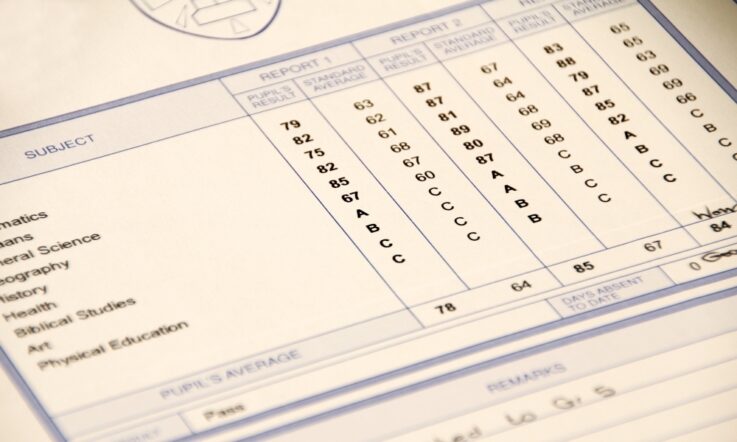PAT: Leading best practice
ACER’s progressive achievement (PAT) resources have been built to reflect contemporary understandings of learning, teaching and assessment. They model international best practice in assessment and have become Australia’s most widely used classroom resource for analysing and monitoring student progress. This article explores what makes PAT special.
1. Based on contemporary understandings of learning
PAT resources have been built to reflect current research-based understandings of learning.
These understandings include recognition that human learning is an ongoing and potentially lifelong process through which individuals develop increasingly deep knowledge and understandings; growing levels of skill in applying knowledge; and evolving personal attributes and values. Findings from the science of learning reveal learning in most fields to be a long-term, cumulative process as new learning builds on prior learning and lays the foundations for further learning.
Research also shows that successful learning is most likely when learning opportunities are tailored to individuals’ backgrounds, starting points and learning needs. The challenge in teaching is to understand and connect with learners’ current levels of attainment and readiness, and to identify appropriate next steps in learning.
Still other research highlights wide differences in the stages students have reached in their learning. In many areas of learning, the most advanced students in a year level can be five to six years ahead of the least advanced students. As a result, individuals vary greatly in what they are ready to learn and the kinds of support they require.
PAT incorporates these understandings through its concept of ‘progressive’ achievement. It recognises that learning often occurs on long timelines. In areas such as reading and mathematics, but also skills such as critical and creative thinking, and attributes such as resilience, students develop more sophisticated knowledge, deeper conceptual understandings, and higher levels of skill over extended periods of time, sometimes throughout their years at school. PAT is built on this appreciation of learning as long-term, progressive and potentially ongoing.
As a result, the fundamental purpose of PAT is to establish and understand the points students have reached in their learning. This information—which may include details of specific difficulties students are experiencing—is crucial for identifying next steps and monitoring growth over time.
2. Developed with a clear purpose
It is common to refer to the multiple ‘purposes’ of assessment. In contrast, PAT recognises only one fundamental purpose of assessment: to establish where students are in their learning progress. This usually means establishing what they know, understand and can do at the time of assessment. This information can then be used in different ways. For example, it can be used (prospectively) to plan next steps for teaching or (retrospectively) to evaluate the progress a student has made since some earlier assessment.
The use of PAT to establish where students are in their long-term progress can be contrasted with the use of assessments to grade students on bodies of taught content. The marks, percentages and grades that result from such assessments are assumed to indicate learning success, but inevitably also reflect, and so are confounded by, differences in students’ starting points. In contrast, PAT defines learning success in terms of the progress a learner makes, whatever their starting point.
3. Aligned with empirically constructed learning progressions
To establish where students are in their learning and to monitor their progress over time, PAT uses a map of long-term development known as a ‘learning progression’. This map describes and illustrates the nature of increasing proficiency in the learning area—for example, increasing skill levels in Writing. It is built from an analysis of how knowledge and skills typically develop in the area, and PAT scale scores indicate the levels on the progression that students demonstrate.
Underpinning PAT is recognition that every student is at some point in their long-term progress and is capable of further progress given learning opportunities at an appropriate level of stretch challenge. PAT’s central expectation is that every student should make excellent ongoing progress in their learning.
4. Adapts to where students are in their learning
When the purpose of assessment is to determine how well students have mastered a specified body of content, or how they perform against a fixed educational standard, it is common to assign every student the same test. However, when students are at quite different stages in their learning, a common test can be too difficult for some students and too easy for others, in both cases providing limited information to pinpoint where individuals are in their learning and to decide appropriate next steps.
In contrast, PAT is designed to maximise information about individual learners. Rather than requiring every student to take the same test, it provides ‘adaptive’ assessments, either by allowing teachers to choose an appropriate test for each student or by automatically giving every student his or her own set of appropriately challenging tasks. Adaptive assessments are possible when the purpose of assessment is to establish students’ locations on a learning progression.
5. Delivers more informative reports
Commonly used marks and grades provide little information about the points students have reached in their learning or the progress they make over time. A test score of 40% may indicate low performance or an unusually difficult test. By themselves, marks and grades provide little information about where individuals are in their learning. They are also an inadequate basis for monitoring progress; a student who receives the same low grade year after year is given no sense of the absolute progress they are making.
In contrast, PAT is designed to provide information about the points individuals have reached in their learning, including descriptions of the kinds of knowledge and skills they demonstrate, and information about their long-term (multi-year) progress.
6. Accompanied by teaching advice and resources
A key use of PAT is to identify best next steps for teaching and learning. The aim is to ensure every student is presented with learning material at an appropriate level of challenge and so maximise the likelihood of successful further learning. PAT provides suggestions for activities appropriate to individuals’ assessed levels of attainment and learning needs. Concepts and skills assessed by PAT are identified for teachers, together with common student errors and misconceptions. The online PAT Teaching Resources Centre provides a wide range of suggested teaching activities that teachers can use to differentiate their teaching and to identify and set challenging learning goals.
7. Supports professional learning
The effective use of PAT requires high-level skills in using assessment information to diagnose and understand individuals’ learning; design targeted teaching that responds to student needs (including errors and misconceptions) and that challenges further learning; monitor the progress students make over time; and evaluate the success of teaching efforts. These are sophisticated pedagogical skills that require a deep understanding of a learning area and of how students learn and make progress in that area over time. The PAT Professional Learning Series provides accredited online courses to assist teachers in their development and application of these teaching skills.
Through its learning progressions for describing and monitoring progress, assessment materials aligned with those progressions, associated teaching advice and resources, and accompanying professional learning, PAT provides a coherent learning ‘system’ based on a set of best practice design principles.



